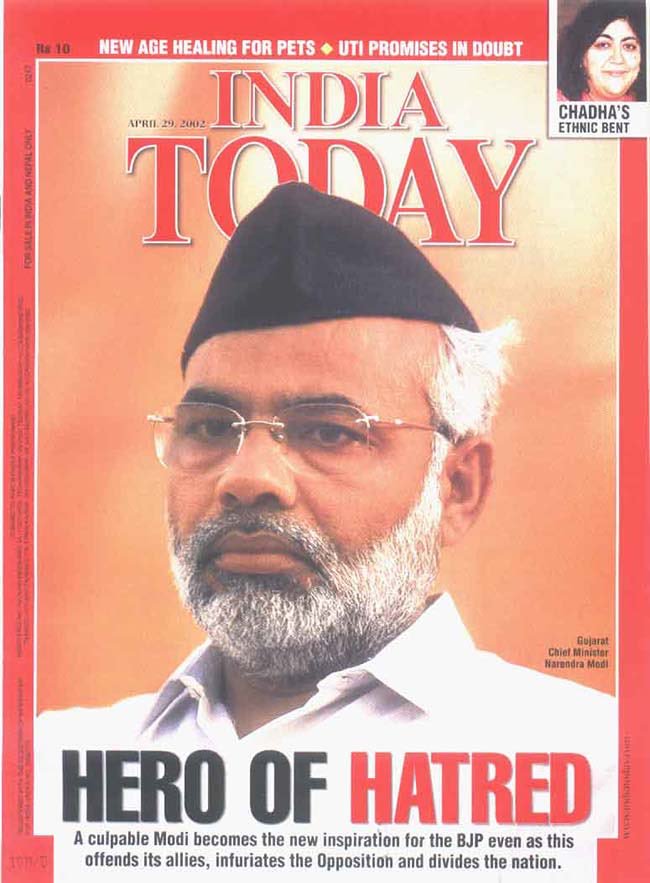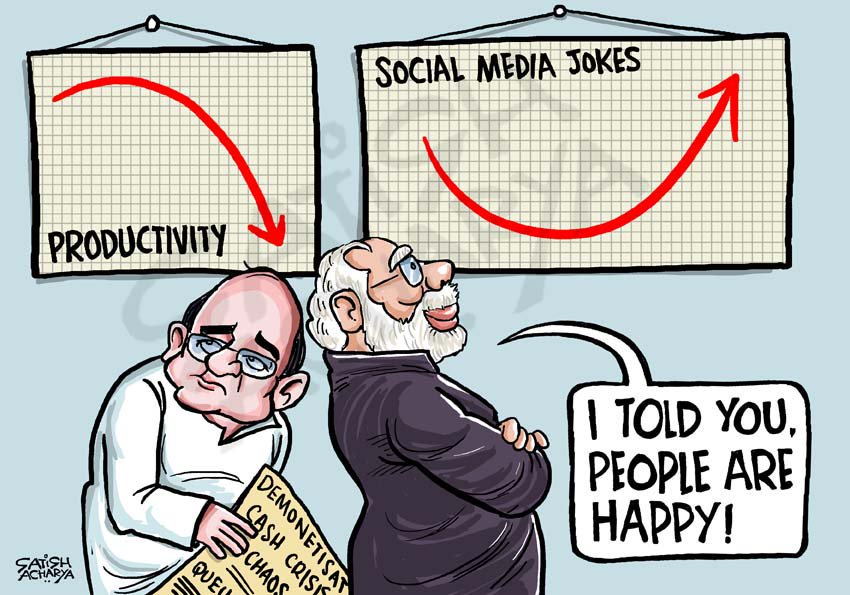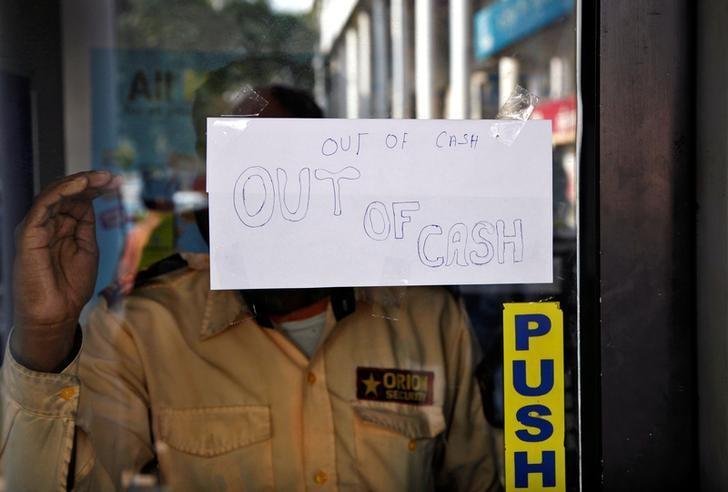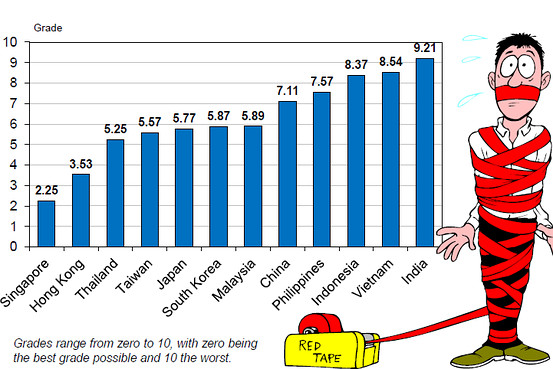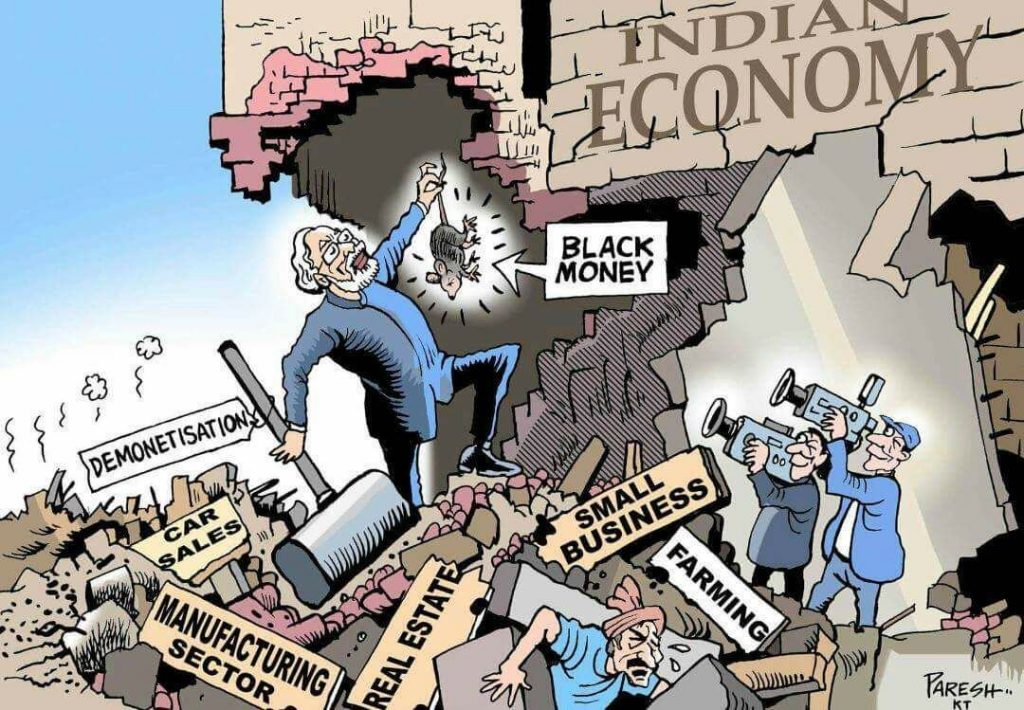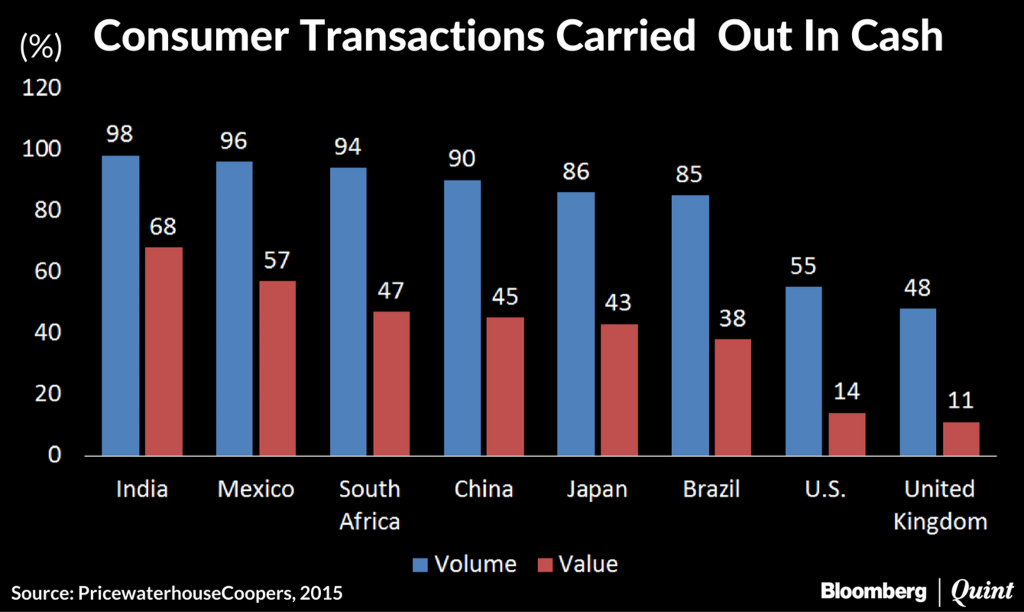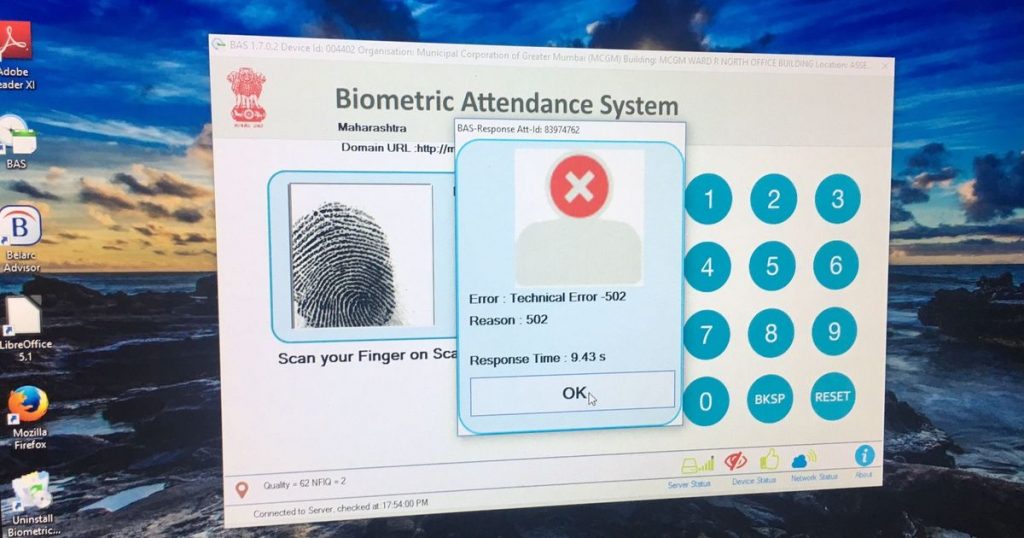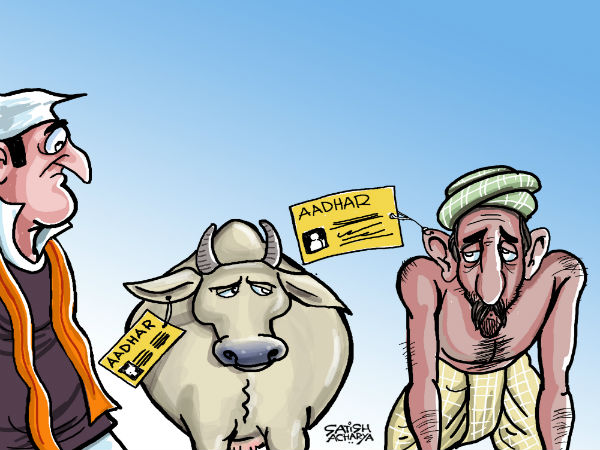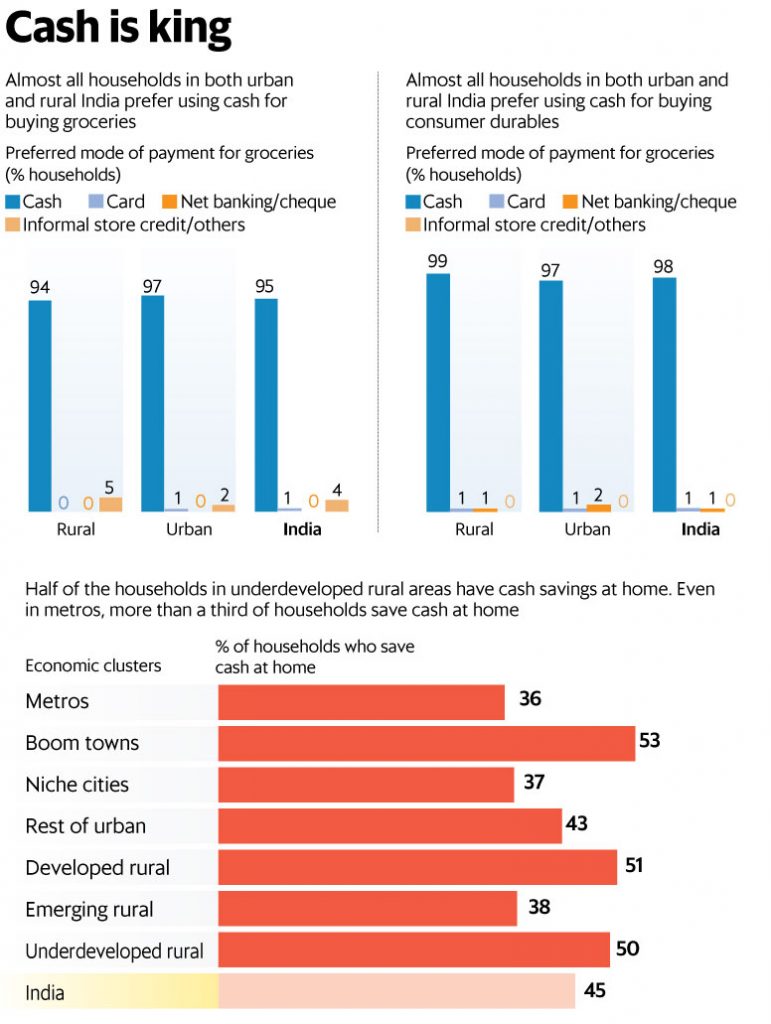India Reverts to its Irrational, Tribal Normal (Part XIII) Over the three years in which Narendra Modi has been in power, his support base has continued to increase. Indian institutions — including the courts and the media — now toe his line. The President, otherwise a ceremonial rubber-stamp post, but the last obstacle keeping Modi from implementing a police state, comes up for re-election by a vote of the legislative houses in July 2017. No one should be surprised if a Hindu fanatic is made the next President. India is rapidly entering a new phase. Modi, a major world-traveler, who has run around quite a bit to please foreign governments and win the support of identity-lacking non-resident Indians, is no longer
Topics:
Jayant Bhandari considers the following as important: Debt and the Fallacies of Paper Money, Featured, newslettersent, On Economy, On Politics
This could be interesting, too:
Robert P. Murphy writes Simon Guenzl vs. Dave Smith on Open Borders
Sean Twomey writes Why Politicians and Bureaucrats Choose Politics over Sound Economics
David Gordon writes The Non-Austrian Theory of the Nonbusiness Cycle
Marc Chandler writes Where We Stand
India Reverts to its Irrational, Tribal Normal (Part XIII)Over the three years in which Narendra Modi has been in power, his support base has continued to increase. Indian institutions — including the courts and the media — now toe his line. The President, otherwise a ceremonial rubber-stamp post, but the last obstacle keeping Modi from implementing a police state, comes up for re-election by a vote of the legislative houses in July 2017. No one should be surprised if a Hindu fanatic is made the next President. India is rapidly entering a new phase. Modi, a major world-traveler, who has run around quite a bit to please foreign governments and win the support of identity-lacking non-resident Indians, is no longer going abroad with the same abandon. Historically and even today, whatever gained approval in the West is what Indians have looked up to. During his reign in Gujarat, a civil-war like situation erupted, which seriously segregated the province’s society. It brought Hindus into a state of trance and excitement and provided them with the fake-security of the collective. Alas, wealth and civilization are created by an intense focus on value-addition, not from the short-term escapist excitement of mobs expressed through riots and rape. Destructive endeavors are a major vulnerability of poor societies, given their irrationality and lack of foresight and planning, and their short-sighted focus on high time-preference, pleasure-centered activities. But Modi has matured. Modi has directed the attention of Indians to nationalism, Hindutava (fanatic Hinduism), the army, the flag, the anthem, and other superficial collective “causes” not underpinned any values or wealth-creating, civilization-producing objectives. Behind this is an empty arrogance pumped up by having grown relatively richer (still with GDP at a mere $1,718 per capita) over the last several decades due of the free gift of western technology. If all this reminds you of the early days of the Arab Spring, you are right on track with respect to understanding what is happening in India. India is an extremely irrational, superstitious and tribal society, which I have discussed in great detail in earlier articles, the last one of which is linked here. |
|
War of AttritionModi has infused so-called educated Indians with a sense of confidence and identity. It does not matter that this is all fake. To a man with a tribal, irrational mind incapable of thinking about tomorrow, throwing furniture onto the bonfire is not a problem, for today’s excitement is all that matters. Lacking empathy and compassion — another tribal “quality” — he pays no heed to the suffering of his fellow man. |
|
| In the deeply irrational society of India, the institutions of liberty that the British left behind were slowly but surely hollowed out. That had to happen, as the glue and the foundations of reason needed to sustain these institutions do not exist in Indian society. The tribal instincts of Indians are diametrically opposed to the concept of liberty. The concept of free speech, a remnant of the intellectual climate fostered by the British, survives for a small fraction of society – but even that is receding rapidly.
Compared to what happened elsewhere in South Asia, the Middle East and Africa, India was — on a relative basis — a beneficiary of its ethnic diversity. This diversity ensured that a collective approach to destroying institutions of liberty and the rule of law worked only slowly, due to infighting. Isn’t it racist to call Indians irrational? Political correctness has indeed made people come to believe that we are all blank slates, which merely need to be reprogrammed through training. The reality has been quite different, as our everyday experience in this globalized world shows. Cultures are so resilient that even after people from these poor societies have migrated to the West, they not only fail to assimilate but more importantly, often regress. Modi’s focus is on centralizing Indian society, increase the State’s control over the individual, increase taxes and compliance, and force people’s attention on collective goals. The tribal instincts of Indians are finally getting the upper hand, as the institutions left by the British come to the end of their lives. India’s chaos means that its totalitarianism will not be like that of Nazi Germany, but similar to that of Zimbabwe. |
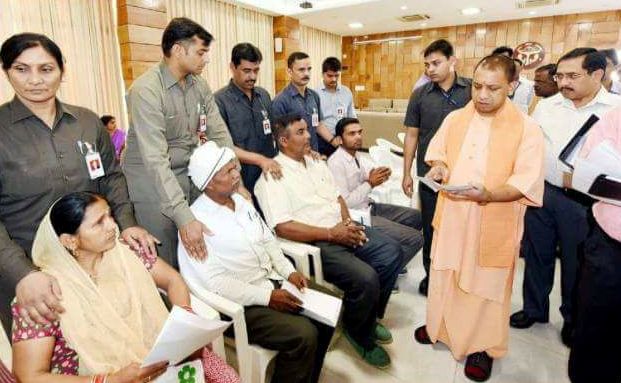 Yogi Adityanath, a Hindu fanatic and the new Chief Minister of Uttar Pradesh, the most populous province of India, distributing goodies, while security personnel restrain citizens from throwing themselves at his feet – a favor citizens gratefully bestow, and those in any kind of power expect. Does anyone really think India is “independent” or “democratic”? - Click to enlarge |
| Modi’s totalitarian agenda also finds support among the IMF, the World Bank and the similar globalist institutions, which appear to be rather simplistic in their thinking. There is a strong belief among these institutions — as they lack understanding of the differences between cultures — that what works in the West must also work in India and other wretched societies.
That may have been possible as long as the British ran India. Without them, fragmentation of the unnatural nation-state of India, or at least aggressive decentralization is the only practical option. In India where an organization of two people has one person too many, the forced centralization that Modi is undertaking is bound to lead to massive chaos, civil war, turmoil, and the eventual disintegration of India into its tribal constituents. India has chosen a painful path to revert to its tribal normal. Colonization by the British was the best thing that happened to what came to be known as India. Without the sanity provided by British supervision or the institutions left by them, Indian tribes will forever be engaged in a war of attrition against each other. |
|
Dysfunctional Organizations Have Become WorseOn 8th November 2016, Modi declared 86% of the monetary value of India’s outstanding currency illegal. Even today, ATMs remain cashless. The banks are clogged with throngs of people. Small businesses — the backbone of India’s economy — keep failing, because people continue to avoid discretionary spending. People have suffered economically as the smooth flow of the economy was disrupted, and transaction costs for businesses have increased. Food prices have recovered a bit recently, but are still at about half their previous levels. Unfortunately, this is not because production has increased, but because demand has collapsed, with many of the poorest people likely unable to buy food. |
|
| India is one of the countries with the highest traffic-related deaths in the world. This happens despite its slow-moving traffic. India has been an utter failure in providing basic government services. Ambulances are often not available at all, or if they exist they are used for the private purposes of those in authority.
In the rare cases when they do arrive, it takes them forever and even then they almost never have paramedics. They often refuse to take the injured to a hospital unless a close relative goes along. The hospitals are either ill-equipped or disinterested in taking such patients if they are not accompanied by a relative. If one is incapacitated in an accident for any reason, the chances of getting emergency aid are extremely low. One is quite likely to simply die on the roadside. The situation is similar with the police and other emergency service providers. The Indian government completely fails at its most important job. Indians simply do not have the capacity (given their irrationality) to build and maintain such basic organizations. This happens even when they spend massive amounts in order to maintain such organizations. India has almost never undertaken a big project and completed it. None of this has discouraged the dreamer Modi. The demonetization effort, in which the government merely had to replace old notes with new ones, has been an utter failure. It is an ongoing pain which has left the economy in shambles, despite the rosy growth figures reported by the government. |
|
The Realities of Going Digital in IndiaOver a billion people in India have no access to internet. When it is available, it is often very slow. Electricity is unreliable. Bank websites are extremely unwieldy. To make an online transaction, the login process is usually very complicated, often requiring several steps and verification codes sent as text messages. More than a month ago, I paid online for a flight ticket from Delhi to London. The money left my account, but I never got the ticket. It was virtually impossible to get in touch with the Indian company I had bought the ticket from. When I did finally manage to contact them, they told me that they had refunded the money. The bank says it never got the refund. Of course, I have had to personally visit the bank every time and spend a long time waiting to talk to someone. In this electronic day and age, more than a month after the event, no-one knows where my money is. It is hard to pinpoint who deserves the blame. Indians are extremely unskilled, uneducated (despite paper certificates aiming to prove otherwise), and lack work ethics. They almost never have passion for their jobs or an interest in providing good services to their clients. This is the main feature characterizing many Indian companies. Management and owners lack professionalism and are singularly focused on the bottom-line, by hook or by crook, eschewing true value-addition. |
|
| I know many people who refuse to use an ATM card. People refuse to make credit or debit card transactions, as they cannot trust the system. Many years ago my Indian credit card company refused to reverse an unauthorized charge. When I asked them to cancel my card, they upgraded my card and imposed a yearly fee. I had no choice but to stop making payments to end a never-ending cycle of problems.
Given the risks involved, many people simply walk down to the bank branch to make an online transaction, which obviously defeats the whole purpose of going digital. When Indians buy something online, they tend to use the “cash on delivery” option, a unique option for buyers in India, where people have no work ethics or trust in each other. |
|
| Virtually anyone one meets in India is perplexed about the charges banks impose on accounts these days. There are non-agreed fees and commissions that appear regularly, and on top of those, service taxes are charged. There are tens of charges which no one knows the reason for or is able to explain.
Bank employees favor you with a blank stare when you ask them for an explanation. Even Modi fans finds themselves boiling in anger when their bank statements arrive. India’s attempt to go cashless will fail. India’s e-commerce companies will fail. The skills and ethics required to run big organizations simply do not exist in India. In the meantime, the forceful imposition of cashless transactions will only succeed in imposing massive costs on society. Other Forced Digitalization Will FailThere has been much talk about the newly imposed national ID system, Aadhaar, and the GST system that is expected to be rolled out in a few months. Aadhaar will fortunately not lead to a Nazi-style police state. India is too chaotic and undisciplined for that. India will be a Zimbabwe-style police state. The stated purpose of Aadhaar was to provide assistance to the poorest people in society. You often see them sitting outside bank branches, begging to get the equivalent of a few dollars that are due to them, for the money often isn’t in their accounts or simply untraceable. |
|
| Mistakes and disappeared money that should be highly unlikely happen all the time in India, as the kind reader by now surely understands, given India’s cultural underpinnings. Data breaches and leakages from the Aadhaar system are becoming everyday news.
Even in a perfect system, which is anyway not possible, Indians will still engage in data breaches for bribes, etc., as they simply do not have respect for their own professions or pride in what they do. Despite the fact that it is unconstitutional, India’s government is making Aadhaar compulsory for filing tax returns, using government services, salary payments, etc. India’s much talked about GST system is to roll out in July. GST will impose a massive need to create audit trails. The simple movement of a good by a transporter to someone’s house will require an electronic document to be produced. Couriers who have so far not had any involvement in this process will be entrapped. Similar e-way bills will have to be created as goods moves from couriers to trucks or change hands in any other way. These documents will have limited validity, so if a person has a possession of a good for more than a certain time while it is in transit, a new e-way bill will need to be created. Any movement of inventory within the same company will have to be documented and filed. Even very small companies will have to file three documents every month and another document every year. No one knows for sure how GST will be implemented. I doubt that the government itself actually knows it — in fact, of course they don’t. It will definitely create a new wave of chaos and many aspects will likely need to be reversed. India has a serious skills shortage. Indian companies can e.g. not find skilled accountants. Most will find the costs associated with implementing such a rigorous system far too high anyway. Increased demand for tax officers and accountants will reduce the pool of workers available for productive activities. |
|
Anxiety is a Way of Life in IndiaIndia’s attempt to go digital will fail. Digital cash will fail. E-commerce companies will fail. In India, the national ID-card system, Aadhaar, will fail. The GST system will likely fail, or it will at least create massive problems in implementation. All these programs will impose huge costs on the economy and the well-being of entrepreneurs, including the wretched poor in the large informal economy. India is looking for totalitarian solutions to deal with problems created by totalitarianism and tribalism. India is trying to use the the facade of the technologically advanced West hoping that the packaging will automatically deal with the lack of inner substance. Fail even with respect to superficial issues seems preordained India’s government cannot provide basic services to its people. Ambulances are conspicuous by their absence. But Modi wants to move on to doing bigger things. In the last 70 years of independence, Indians have systemically destroyed the institutions of the rule of law that the British had bestowed on the country. There is a lot of pain and no gain facing India. If they had any sense they should be begging the British to return and rule the country. That is the only option apart from chaos, disintegration, and eventual never-ending tribal infighting among the fragments. |
|
Tags: Featured,newslettersent,On Economy,On Politics

